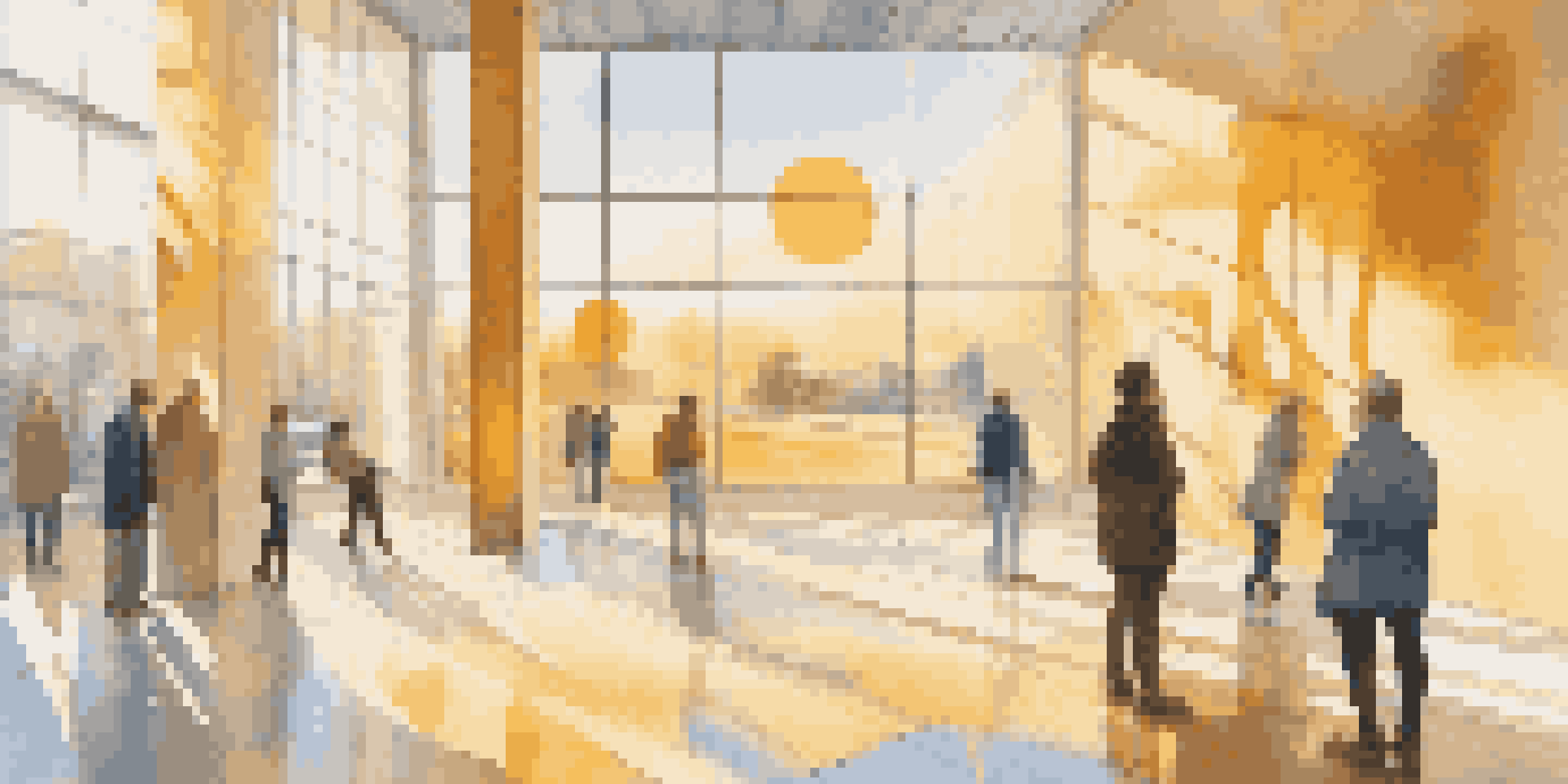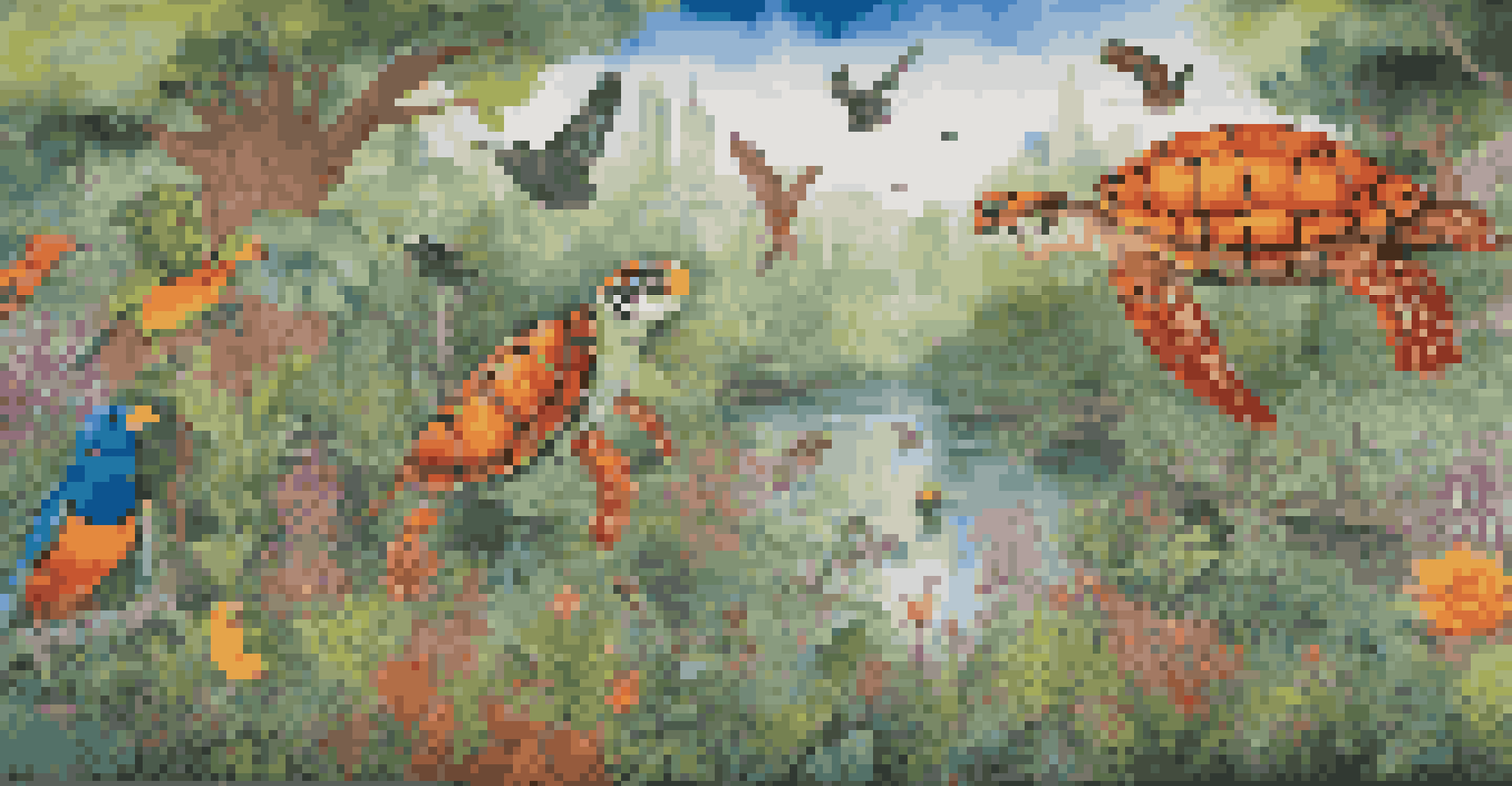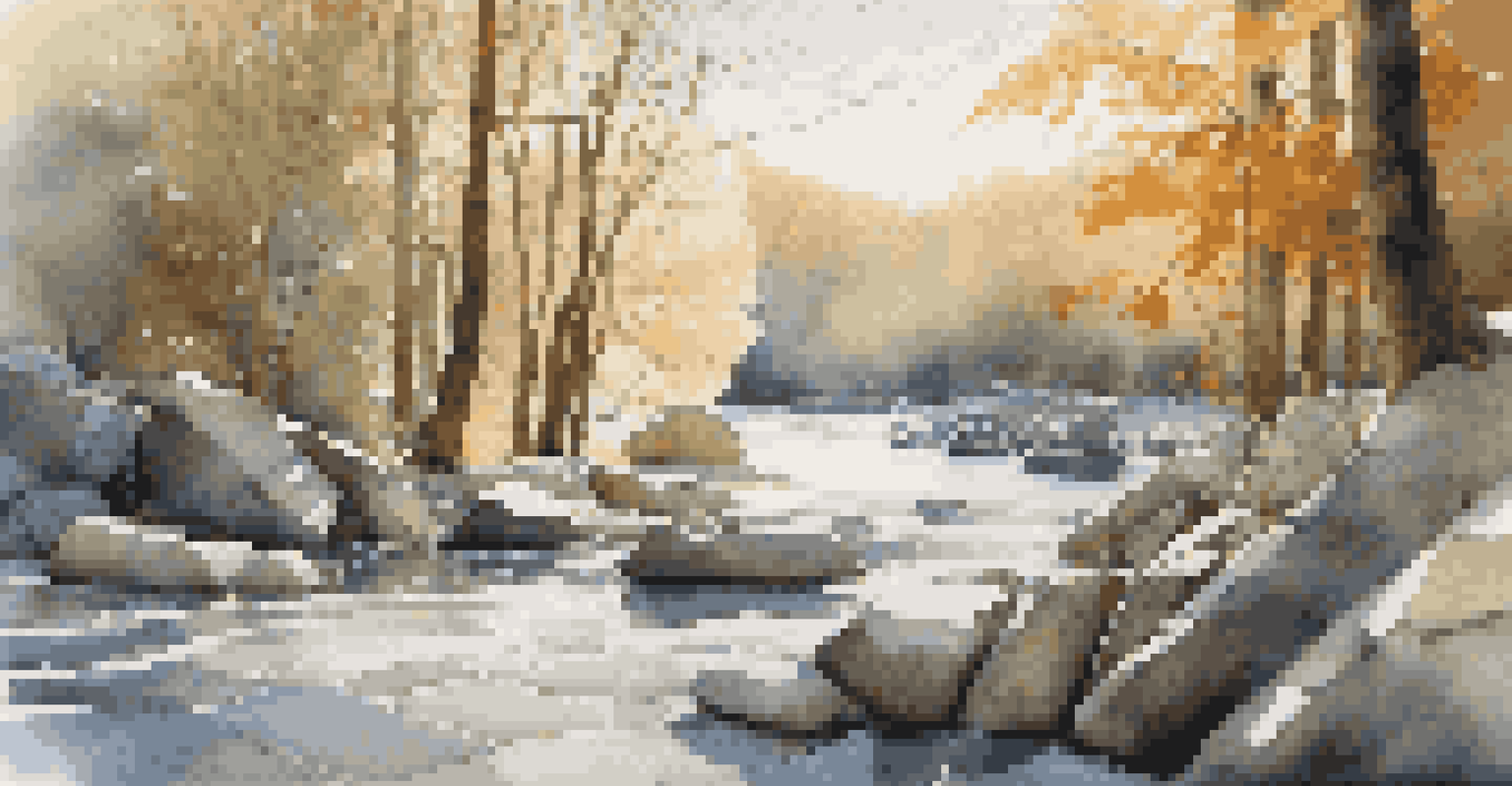Artistic Collaborations: Artists and Scientists Addressing Nature

The Power of Collaboration: Art Meets Science
The world of creativity isn't limited to the arts; it also thrives in science. When artists and scientists come together, they can blend their unique perspectives to address pressing environmental issues. This kind of collaboration often results in innovative solutions that neither could achieve alone, showcasing the importance of interdisciplinary dialogue.
Art is not a mirror held up to reality, but a hammer with which to shape it.
For instance, consider the collaboration between artist Olafur Eliasson and scientists on climate change awareness. Eliasson's installations not only captivate the audience visually but also provoke thought about the urgent need for environmental action. Such partnerships can transform complex scientific data into relatable artistic expressions that resonate with the public.
Ultimately, these collaborations remind us that creativity and inquiry are interconnected. By merging artistic vision with scientific rigor, we can create compelling narratives that inspire change and foster a deeper connection to nature.
Art as a Medium for Scientific Communication
Art has the unique ability to communicate complex scientific concepts in digestible ways. Scientific research can often be laden with jargon that makes it inaccessible to the general public. However, through visual storytelling, artists can translate this information into engaging formats that spark curiosity and understanding.

Take the example of the 'Ocean Art' project, which uses stunning imagery of marine life to highlight the effects of pollution and climate change. The artwork serves not just as decoration but as a powerful message, urging viewers to appreciate and protect our oceans. This method of communication can evoke emotional responses that raw data often fails to achieve.
Collaboration Enhances Environmental Action
Interdisciplinary partnerships between artists and scientists can create innovative solutions to pressing environmental challenges.
By harnessing the emotive power of art, scientists can reach wider audiences and inspire collective action. This approach fosters a sense of urgency and responsibility towards environmental stewardship, making the message resonate on a personal level.
Case Study: The Weather Project by Olafur Eliasson
One of the most notable examples of artistic collaboration is Olafur Eliasson's 'The Weather Project,' which was displayed at the Tate Modern in London. This installation recreated the sun and sky within the museum, inviting audiences to reflect on their relationship with nature. It was a striking reminder of the beauty and fragility of our environment.
Science and art are both about curiosity and the desire to understand the world.
Eliasson's work encourages viewers to engage with their surroundings and consider the impact of climate change. By simulating natural phenomena, he not only creates a captivating experience but also raises awareness about the urgent need to protect our planet. This interplay of art and science captures the complexities of environmental issues in a way that is both accessible and thought-provoking.
The success of 'The Weather Project' illustrates how art can provoke critical discussions around scientific topics. It serves as a powerful example of how artistic expression can invite deeper contemplation about our role in the natural world.
Scientific Research Inspiring Artistic Expression
On the flip side, scientific discoveries can also inspire artists to create impactful works. When artists delve into scientific research, they often find new themes and ideas that fuel their creativity. This exchange can lead to innovative art forms that reflect current scientific understanding and societal challenges.
A great example is the work of bio-artist Heather Dewey-Hagborg, who uses DNA samples to create 3D-printed sculptures of what individuals might look like based on their genetic material. This intersection of genetics and art raises ethical questions about identity and privacy while pushing the boundaries of traditional art practices.
Art Translates Science for the Public
Art serves as a powerful medium to communicate complex scientific concepts, making them more accessible and engaging for the general public.
Such artistic explorations not only captivate audiences but also encourage critical dialogue about scientific advancements. By highlighting important issues through art, these creators transform abstract concepts into tangible conversations, making science more relatable and engaging.
Environmental Art: Raising Awareness Through Aesthetic Appeal
Environmental art is a genre that directly addresses ecological concerns while beautifying spaces. Artists often use natural materials or themes to highlight the relationship between humans and the environment. This kind of art can serve as a constant reminder of our responsibilities towards nature.
Take, for instance, the work of Andy Goldsworthy, who creates intricate sculptures using leaves, stones, and ice. His temporary installations invite viewers to appreciate the beauty of nature while recognizing its impermanence. Each piece is a reminder of the delicate balance we must maintain with our environment.
By incorporating environmental themes into their work, artists challenge us to reconsider our daily habits and the impact they have on the planet. This form of expression can inspire a sense of stewardship, urging individuals to take action for environmental preservation.
Community Engagement: Art as a Tool for Environmental Action
Art can also serve as a powerful tool for community engagement around environmental issues. Art-based initiatives often bring people together, fostering collaboration and collective action. By involving communities in artistic projects, artists can amplify local voices and inspire action toward environmental stewardship.
For example, community murals that depict local ecosystems or endangered species can raise awareness about local environmental issues. These artworks become a rallying point for community members, sparking conversations and motivating collective efforts to protect their surroundings.
Community Art Sparks Collective Change
Art-based initiatives foster community engagement and inspire collective action towards environmental stewardship.
Such initiatives underscore the potential of art to drive social change. When communities actively participate in these projects, they develop a deeper connection to their environment, reinforcing the idea that everyone has a role in promoting sustainability.
The Future of Artistic Collaborations in Environmental Advocacy
As we face increasing environmental challenges, the need for innovative solutions becomes more pressing. Artistic collaborations are likely to play a pivotal role in shaping future environmental advocacy efforts. By merging creativity with scientific insight, artists and scientists can develop new strategies to address complex issues.
Emerging technologies, such as virtual reality and interactive installations, offer exciting opportunities for artists to engage audiences in immersive experiences. These innovations can help to visualize the impacts of climate change and foster a sense of urgency for action. The potential for collaboration is vast, as artists continue to explore new mediums and methods of communication.

Ultimately, the future of artistic collaborations will depend on the willingness of both artists and scientists to work together. By breaking down silos and embracing interdisciplinary approaches, we can cultivate a deeper understanding of our environment and inspire collective action for a sustainable future.